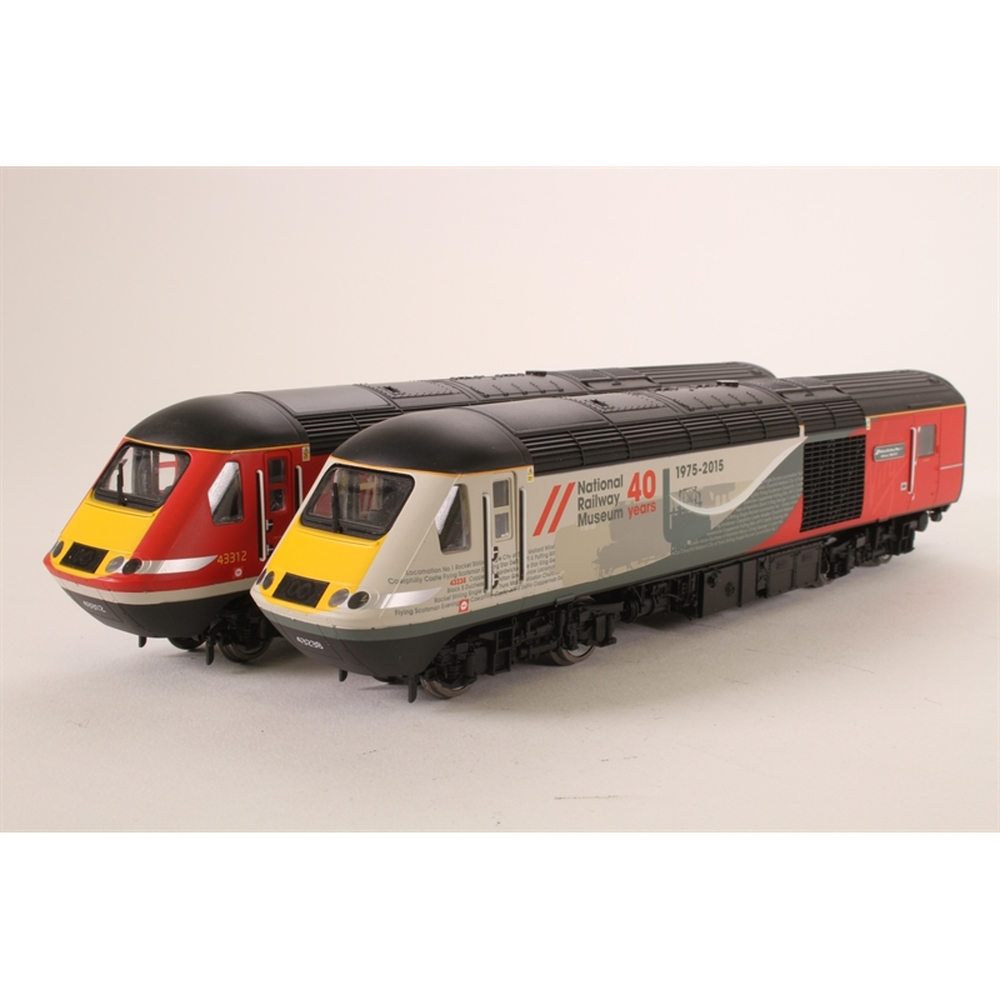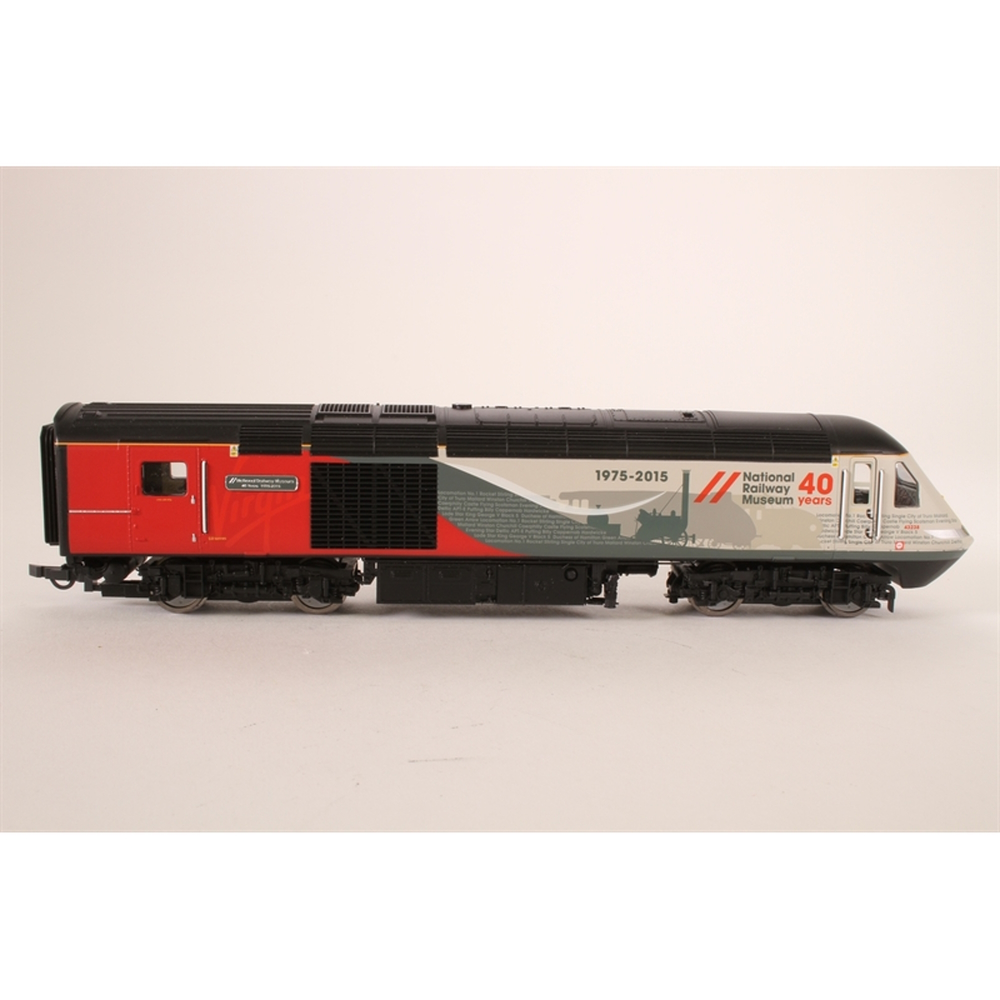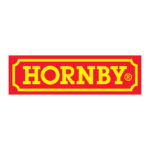You are here:
Hornby R3502 HST Class 43 43238 “NRM40” & 43312 In Virgin Trains East Coast Livery
Hornby R3502 Virgin Rail East Coast 125 HST Class 43
Out of stock
Description
Hornby R3502 HST Class 43 43238 “NRM40” & 43312 In Virgin Trains East Coast Livery
Produced in the 2015-2016 Virgin East Coast livery.
Originally conceived as a cheaper, more reliable alternative to the Advanced Passenger Train in the early 1970s, the British Railways Board authorised the development of a prototype High Speed Diesel Train with two locomotives designated as Class 41. These aerodynamic power cars were constructed by BREL at their Crewe Works and emerged in June and August 1972, fitted with Paxman Valenta 12RP200L engines, developing 2,250 hp.
In 1987, for trial purposes, eight of the Class 43s were converted for use as Driving Vehicles with the Class 89 and Class 91 locomotives. The power cars were fitted with buffers and Time Division Multiplex (TDM) equipment that allowed them to directly control the other locomotive. Following the delivery of Mark 4 stock, the TDM equipment was removed and the power cars reverted to their normal duties.
During the late 1990s, twenty five of the Class 43s were updated with Paxman 12VP185L engines in an attempt to reduce fuel consumption and emissions; however these proved to be less reliable in service than was hoped. The HST fleet has seen many changes to the operating companies since privatisation in 1993, but Class 43 driven sets continue to operate nationwide, courtesy of First Great Western, Virgin East Coast, East Midlands Trains, Grand Central, Cross-Country and Network Rail.
Since taking over the East Coast Main Line franchise in March 2015, the Virgin Trains East Coast (VTEC) fleet of HSTs have operated primarily from the Craigentinny depot in Edinburgh, with services running out of Kings Cross to Inverness, as well as serving Lincoln, Hull, Leeds, Skipton, Harrogate and Aberdeen.
Having first appeared on the routes in an interim branding, the “biggest rebranding exercise on the East Coast Main Line in a decade” had been applied to seven diesel HST sets by August 2015, with the whole fleet due for completion by November 2015.
This twin pack also includes the new liveried Virgin Trains East Coast HST power car that formed the set with 43238 on the day of the naming.Power Car: 43238 “National Railway Museum 40 Years 1976-2016”
Dummy Car: 43312.
Technical Specification of the model
| Gauge | 00 |
| Length | 2 x 235mm |
| DCC Type | Ready |
| Lighting | Bi-directional front white (3 of) rear red (2 of) |
| Period/ERA | Era 10 – Post – privatisation |
| Operator/Livery | Virgin East Coast Main Line with Special NRM Livery |
| Designer | Sir Kenneth Grange |
| Entered Service | 1978 |
| Minimum Curve | R2 |
| Motor | 5 Pole Skew Wound |
| Wheel Configuration | Bo-Bo |
| No of Axles Driven | Motorised Car – 4 driven through double flywheel and Cardan driveshafts |
| Cab | Detailed and internal LED lighting with manual opening cab doors |
| Drive | Drive on all axles of the motorised car using Cardan shafts coupling from motor to drive boggy gearboxes. |
| Build Structure | Plastic body and cast alloy chassis on the motorised car with plastic chassis on the non-motorised car. Roof body and bogie detailing. Mainly this for locos, but Hornby Railroad can be all plastic. variable by model |
| Age Suitability | 14+ years |
Additional information
| Weight | 3000 g |
|---|---|
| Brand | Hornby |
| Condition | New |
| Scale | OO/HO Gauge |
| Format | HST |
| Status | DCC Ready |



